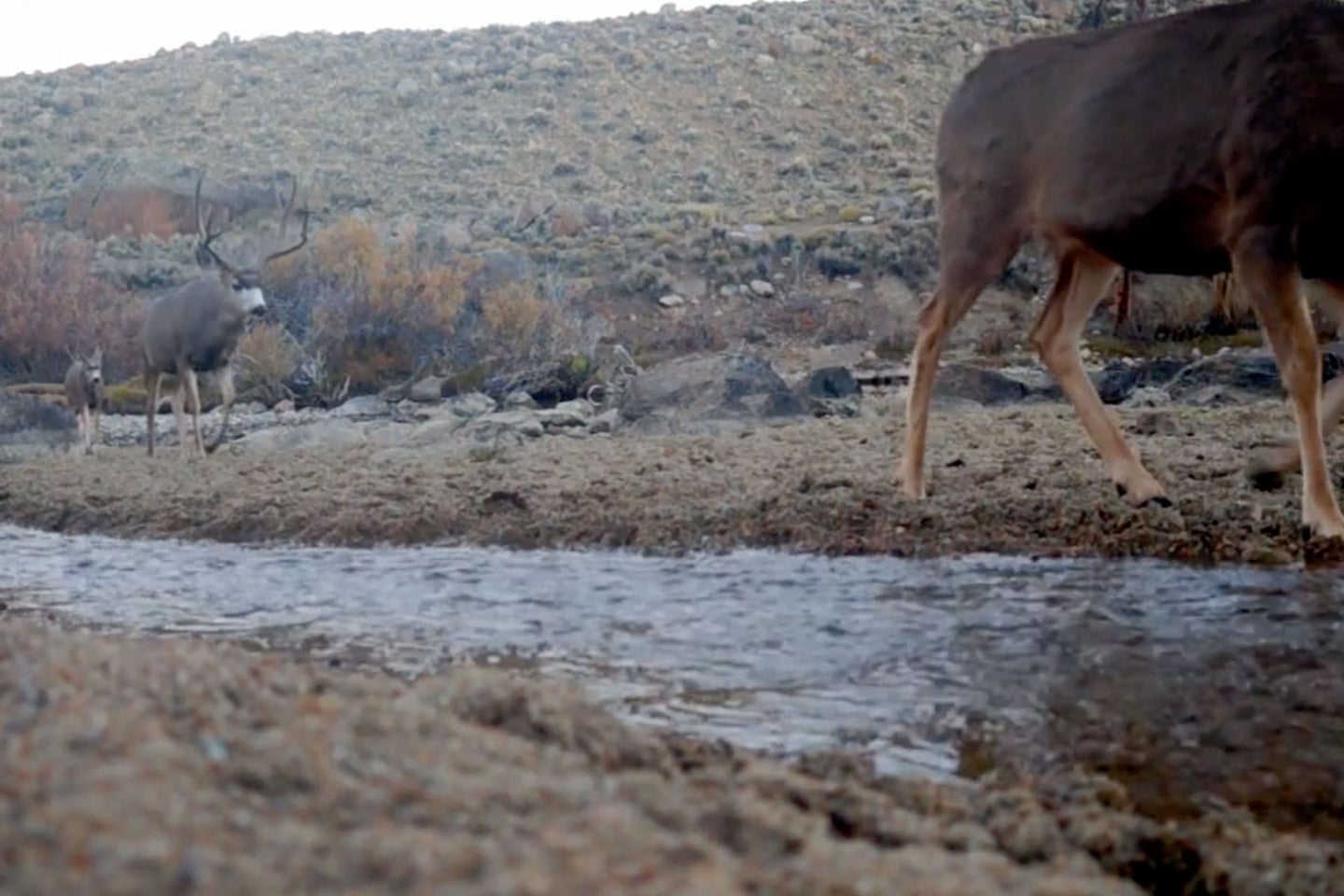Controversial BLM Proposal Would Increase Protections for the World’s Longest Mule Deer Migration Corridor

Muleys in western Wyoming use the Red Dessert-Hoback migration corridor to complete one of the longest ungulate migrations known to science. Wyoming Mule Deer Migration Initiative/Joe Riis Photography
The world’s longest known mule deer migration corridor may soon have increased protections. A controversial Bureau of Land Management (BLM) proposal would designate about a 3rd of the Red-Desert to Hoback migration corridor as an Area of Critical Environmental Concern (ACEC).
The Red Desert to Hoback migration route was discovered by scientists in 2014 and spans about 150 miles across western Wyoming. Thousands of deer utilize the migration corridor including “Deer 255,” the farthest migrating muley on record. Deer 255’s migration route extends about 90 miles further than most deer that use the Red Desert to Hoback route.
This August, the BLM released a proposal that could have a significant impact on the route. The long-awaited Rock Springs Field Office Draft Resource Management Plan would update a 1997 resource management plan for millions of acres of public land in the Cowboy State. The recent proposal includes several management alternatives—but strikingly, the federal government’s preferred alternative includes ramped-up protections for a significant portion of the Red Desert to Hoback route, primarily in the southern part of the corridor. The preferred alternative would designate much of that area as an ACEC, effectively limiting energy development, which is known to delay and disrupt mule deer migrations.
According to Matthew Kauffman, a wildlife biologist with the U.S. Geological Survey, the proposed designation would be the “the first protection of this sort for a mule deer migration corridor.”
“This [proposal] is part of a broader movement focused on mapping the migrations of ungulates in the West,” he adds. “For a long time, we’ve known about these kinds of migrations, but until the advent of GPS collars 20 years ago, we haven’t had the ability to make detailed maps of migration corridors. Now we’re using those maps to guide the work that needs to be done on the ground.”
Kauffman emphasizes the importance of protecting migration corridors by explaining that the deer’s travel patterns are a “learned behavior” that require “choreographed movements” following the spring green up.
“These migrations are a type of ‘animal culture,’” he says. “Where to go and when to go are not coded into the genetics of these animals. They exist in the learned experience of the animals. Mom learns it when she’s young then passes it onto their offspring. The tradition of the migration is sustained in the same way humans sustain oral traditions. We need to maintain the population of the animals that have the knowledge to maintain the migrations.”
The Broader BLM Proposal Has Prompted Fierce Backlash
The BLM’s 1,350-page proposal has many critics. According to the New York Times, much of the controversy is part of a rift in the West over who should have authority over public lands—the federal government or the state and its citizens where the land is located. Particularly, the preferred proposal would sharply limit oil and gas development while heavily prioritizing wildlife conservation.
“When we saw the draft come out, we were surprised, like many people, by how bold the proposal is,” explains Josh Metten, Wyoming Field Manager for the Theodore Roosevelt Conservation Partnership (TRCP). “The result has been some major conflict and controversy. There’s a big concern over the impacts to surrounding communities.”
The TRCP, along with a coalition of other sportsmen organizations, had made preliminary recommendations to the BLM regarding the management plan. The organization did not advocate for an ACEC along the Red Desert to Hoback corridor, though it did advocate for conservation protections to preserve the migration route. TRCP has not yet taken an official stance on the Red Desert to Hoback ACEC.
“There’s a lot of toxicity in the state of Wyoming surrounding ACECs. There’s a perception that it’s a federal overreach,” says Metten, who is committed to bridging gaps between different stakeholders in the region while preserving the iconic migration.
Read Next: Hunters and Anglers Speak Out Against Proposed Industrial Road Through Alaska’s Famed Brooks
“One of the things that I love about living in Wyoming are the intact wildlife migrations,” he adds. “I’ve had the opportunity to enjoy observing and hunting deer that are part of the Red Desert-Hoback migration.”
The BLM is accepting comments from the public on the Draft Resource Management Plan until January 17. “A lot of work happens between a draft plan and a final plan, and that work is best informed by people who roll up their sleeves to work together,” said BLM Director Tracy Stone-Manning, in a statement. “We are committed to doing that work to finalize the final plan.”
The post Controversial BLM Proposal Would Increase Protections for the World’s Longest Mule Deer Migration Corridor appeared first on Field & Stream.
Articles may contain affiliate links which enable us to share in the revenue of any purchases made.
